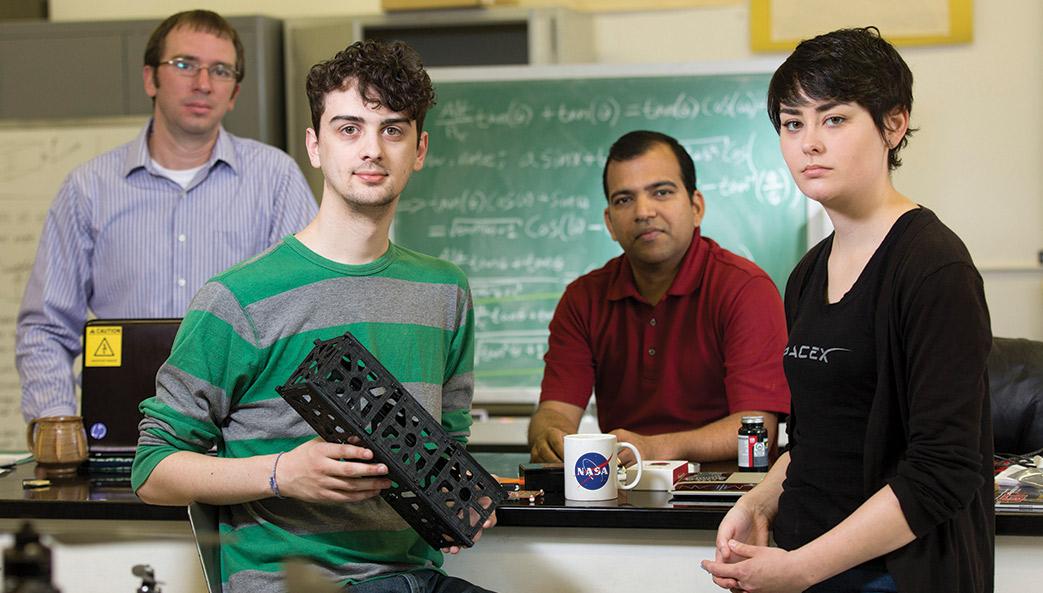Liftoff!

A project led by a team of UGA undergraduate students and including faculty from the Franklin College of Arts and Sciences and the College of Engineering was recently selected for funding by NASA’s CubeSat Launch Initiative.
The UGA proposal, “CubeSat for GA Water Resources,” to NASA’s Undergraduate Student Instrument Project will receive $200,000 in funding to prepare their satellite for launch.
The project is UGA’s first space program.
The spectrographic observatory of coastal regions, or SPOC satellite playfully known as DAWGSat, will be designed to perform the first moderate resolution multispectral analysis of vegetation health, ocean productivity, near-coastal sediment, organic matter and production of shelf waters and salt marshes from low Earth orbit.
A second CubeSat project also won $200,000 in funding—one of 10 selected by the U.S. Air Force Research Laboratory—to build the mapping and ocean color imager, or MOCI.
This CubeSat will perform photogrammetric analysis, known as “structure-from-motion,” in low Earth orbit to generate 3-D point clouds of broad scale structures on the Earth’s surface.
The UGA proposal to NASA was one of 43 selected for funding by its Office of Education and the Science Mission Directorate. The student-faculty collaboration will support the Small Satellite Research Laboratory to build both cube satellites.
“It’s two parallel ideas running at the same time—one from the students’ side and one from the faculty side,” said the project’s principal investigator, Deepak Mishra, associate professor in the Center for Geospatial Research in the geography department.
UGA undergraduate students were planning to kick-start their own CubeSat for $10,000 until they realized that they could join forces with the university’s faculty and do something even better.
“Everyone was really excited when we realized this. The students had the manpower and motivation to actually build the craft, but we had absolutely no idea what it was going to do,” said Caleb Adams, an astrophysics and computer science double major and chief manager of the satellite research lab.
“We have a very diverse team—engineering, physics, computer science, mathematics—and all of the puzzle pieces clicked in a really perfect way,” he said.
Other key student members include Nicholas Neel, mathematics; Khoa Ngo, mechanical engineering; Megan Le Corre, mechanical engineering; Kenny Chochran, marketing and finance; Jaicob Stewart, computer science; Juweek Adolphe, computer science; Paige Copenhaver, astronomy; and Nirav Ilango, geography and computer science.
The student-faculty team met weekly, and the undergraduate team developed both proposals by piecing together ideas discussed in the meetings.
“It was an intensive exercise and we got a lot out of that process,” said Neel, a third-year student from Chickamauga, Georgia.
“The functionality idea is to allow a small satellite to perform like a large satellite, a commercial satellite or a satellite that would be built by NASA,” said Sergio Bernardes, associate director of UGA’s Center for Geospatial Research. “It reflects the direction of the remote sensing community more broadly, toward more cost-efficient technologies that still allow us to have images covering the entire planet daily.”
